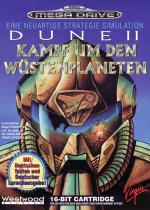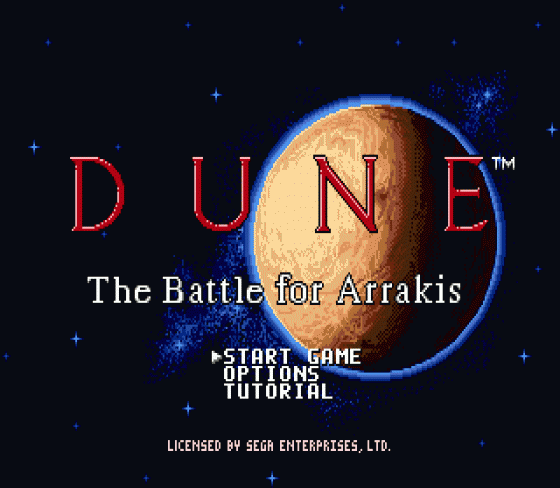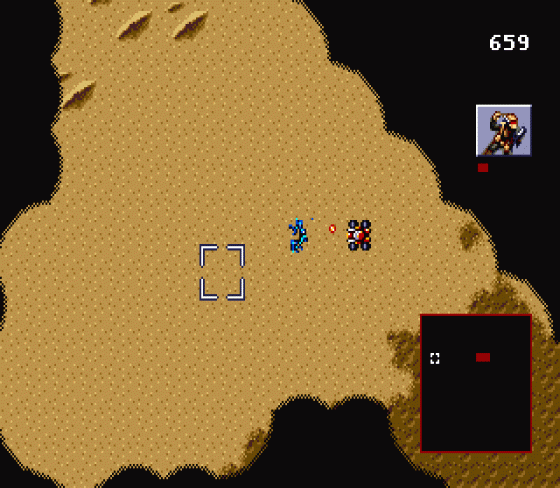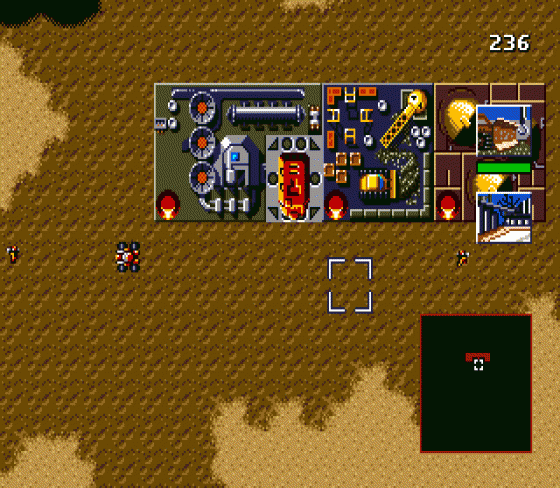
Mean Machines Sega
 1st December 1993
1st December 1993
Categories: Review: Software
Publisher: Westwood Studios
Machine: Sega Mega Drive (EU Version)
Published in Mean Machines Sega #15
Dune II: Battle For Arrakis
Let it be known. His Sublime Majesty, the Padishah Emperor Shaddam IV has previously decreed that the planetary designate of Arrakis has been granted to the Duke Leto Atreides, and his House. His Majesty charges them with contiued production of the Spice Melange, unique to Arrakis, for sale to the Spacing Guild and Landsraad of planetary Houses.
It is recognised that representatives of the House Harkonnen are still based on Arrakis, and have not left in accordance with the wishes of the Emperor's Planetologist. Having considered the enmity between these two Houses of the Landsraad, the Emperor has decided that the House who wins Arrakis by force of arms, may have the spice as their prize.
When Three Tribes
There are three tribes on Arrakis: Atreides, Harkonnen and Ordos. The Ordos is an invention for the game, and doesn't figure in the Dune novel. The native tribe of Arrakis, the Freman, is absent. You can play each of these three tribes. The different cultures of each requires a different style of gameplay. Atreides are spice-orientated; Harkonnen are warlike, and Ordos are a mixture of the two. Playing Atreides is the easiest entry for the game.
Ad Astra

On later levels, new structures present themselves on the command centre building screen. Of these Starports are the most useful, allowing you to buy all sorts of machinery for less than it costs to manufacture. Palacos allow you to construct more Command Centres, and Hi-tech's open the way for airborne items like ornis and Carryalls.
Active Service
Your mobile battle units are easy to control. Click the cursor on top of the chosen unit, then move it and click again to position the unit. Units attack any enemies within range. The more advanced you are, the more powerful the weapons. You start with Quads and Trikes, then progress to Missile Launchers and awesome Death Tanks and Sonic Tanks - with their wave weapons.
Carryalls are a special type of vehicle. They protect the harvesters from attack from desert worms, and speed up spice harvesting by taking the harvesters to the refinery by air.
Iconoclasm
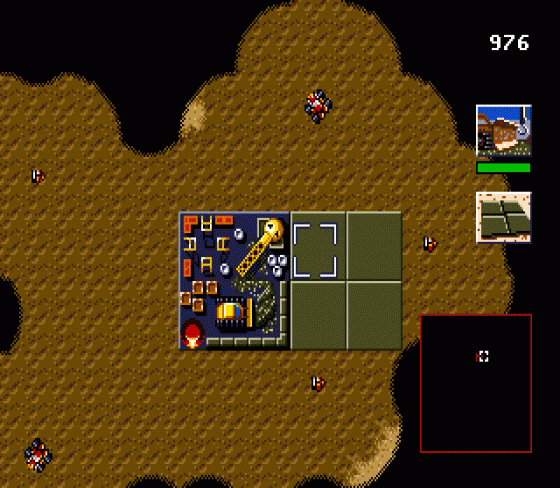
All the information in Dune II is covered by icons. In the top right corner is the amount of spice credits you have to spend. Also there is the currently selected vehicle/building. The top line shows the strength of the unit. For structures, the bottom line shows how near the unit is to completing its task. By double-clicking on a structure, you get to see its status screen.
Origin
This is Virgin's second Dune game on Sega (after Dune CD) based on the Frank Herbert novels.
How To Play
On each of the 24 levels, build a base to extract spice and destroy your opponent's facilities.
Lucy

Rah, rah, thumbs up and hallelujah for Virgin. This game is beyond a doubt my favourite of the year - if not ever. I know that probably sounds strange since it's pretty crap to look at and sounds awful but believe it or not these usually major factors fade into insignificance when you're talking about this game because they serve their purpose and set exactly the right atmosphere.
It's mind-bending stuff working out how to reap your spice, protect your base and blast hell out of the enemy all at the same time but the controls are spot on, it's really easy to get into and once you are in, it's utterly un-put-downable.
I was a bit worried when we got it in for work in progress because I raced through to section seven straight away but at about that time the challenge factor accelerated (thank goodness) and the levels started getting much tougher. So anyone looking for a bit of a doddle, don't look here, on the other hand if you fancy a game which has masses of strategy, oodles of blasting action, masses of challenge and whole heaps of fun, look no further than Dune II. Highly recommended.
Gus
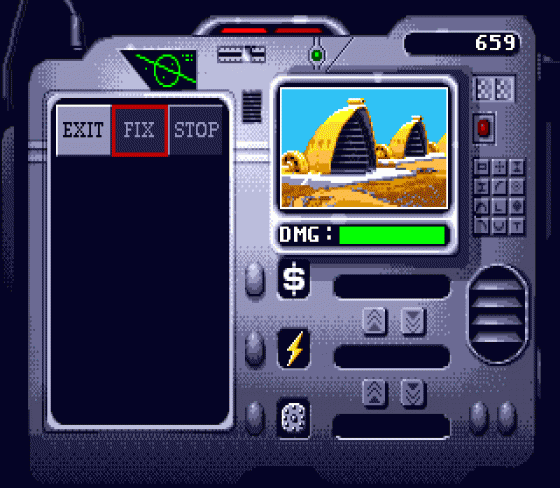
When we did our Work In Progress, I got very excited about Dune II. It seemed the near perfect mix of real-time strategy and action.
Thankfully, it's every bit as classic in the finished version. The ingenious gameplay is classic in its logic and simplicity - it won't take long to pick up, but the potential for developing tactics is enormous. The game is coupled with an excellent control method: precise, simple and even the short delay in response doesn't detract.
But what makes me love the game is its great atmosphere, which really does capture the mood of Dune the novel. Okay, all this isn't going to sway the doubters who see the functional graphics and blanch at the thought of a thinking game, but this is clearly the best strategy game since Mega-Lo-Mania and demands recognition as a total megagame.
Verdict
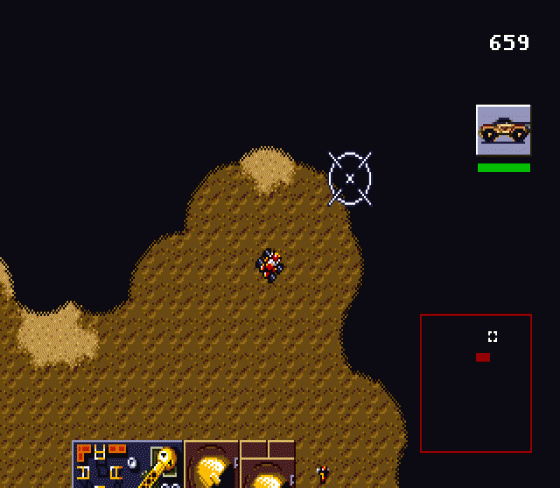
Presentation 93%
P. The tutorial mode is excellent. The exceptional mark here also covers the great atmosphere and the authentic feel of Dune.
Graphics 76%
P. The icons are clear and the screen is well laid out.
N. The graphics are not spectacular, and don't vary much. In themselves, they are not important.
Sound 72%
P. Each unit responds to your commands verbally - the sound FX are fab.
N. The weedy music tends to get lost behind the FX, and isn't important.

Playability 94%
P. Great fun to play, if you have even half a brain cell. Each level turns into a titanic struggle for domination. Striving for new weapons, and battling to maintain supplies is gripping.
Lastability 90%
P. By about sector 7, a game is lasting about an hour, and progress is bitterly fought for. Dune II has classic lastability.
N. There are only 21 levels, even more would have been nice.
Overall 93%
This game is going to win awards. It may not be the average console game, but it's all the better for it. A definitive mind game for the Megadrive.

